How to Make Aromatic Candles from Fruit Rinds
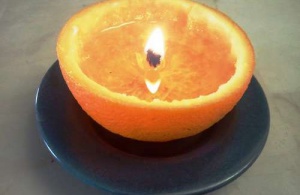

Written and verified by psychologist Valeria Sabater
Aromatic candles have been used for a long time to decorate homes and those most intimate places we go to relax. They’re also used in natural medicine, thanks to the use of essential oils and their healthy properties.
Candles have been used for a long time as an indispensable form of illumination. They were made from animal fats and had an unpleasant odor. With the arrival of electric light, candles started to be used for decoration in intimate spaces of relaxation and introspection.
Later on, people began to mix in essential oils that help relax. Due to their aromas, they have a sedative effect that may even relieve migraines or headaches.
Aromatic candles and aromatherapy
The use of smells as agents of rest is something that has always carried a lot of weight in the field of natural medicine. Aromatherapy relies on the sense of smell to produce certain sensations in the body, thanks to essential oils extracted from plants and fruits, roots, stalks, and leaves.
These things help relieve stress and anxiety and give us certain sensations thanks to those perfumes that are mixed in with the wax and the soft smoke we inhale.
Discover: Essential Oils That Will Relax You
Here are some of the properties associated with certain essential oils that we can always find in establishments such as herbalists or drugstores:
- Lavender: Is relaxing and helps relieve anxiety and stress.
- Cinnamon: Is associated with mental stimulation.
- Apple: It’s said that it may help relieve migraines.
- Jasmine: Relaxing and sedating.
- Gardenia: Offers us tranquility.
- Coconut: Sweetens the air.
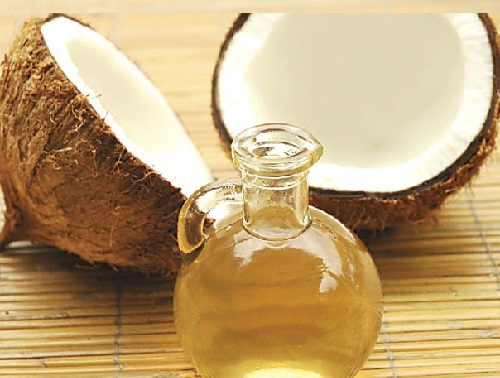
- Eucalyptus: Disinfects the air and helps us improve our concentration.
- Vanilla: Is calming and may help relieve depression.
- Lemon: May help relieve anxiety and dizziness.
- Cinnamon: Helps relieve nervous fatigue.
- Orange: Has sedative properties.
- Rose: Helps with insomnia and headaches and helps reduce stress.
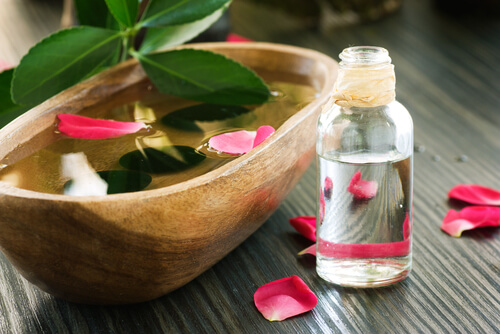
- Thyme: Ideal for mental tiredness.
- Cedar: May help improve mood and optimism. It’s relaxing and creates an agreeable atmosphere in a room.
How to make aromatic candles from fruit rinds
Materials
- Refined wax or paraffin wax. (The quantity will depend on how many candles we want to make and their size.)
- Essential oils: You can choose whichever you need most or the one that fits your personal taste. Most of them are relaxing and easy to find in any natural store.
- A mold.
- A pan for melting the paraffin wax.
- A clamping bar.
- A candle wick (the small fuse-like string in the center of candles that can be lit). They’re also easy to find.
Read more here: Aromatherapy: What Does It Consist of?
Procedure
- Begin by melting the paraffin wax in the pot in a water bath, stirring with a spatula. Heat the wax until it melts. Once the wax has melted, add the essential oil you chose. Remember to do so only once the wax has cooled a little because if you don’t, it’ll evaporate quickly.
- Next, pour the mixture into the mold, which can be round or square. The mold and the candle wick should be greased with some kind of kitchen oil.
- To affix the candle wick in the center of the candle, you have to tie one end of the cotton wick to the clamping bar. Insert it so it’s easier to later insert the candle wick.
- Then, you have to wait five hours while the essential oils, paraffin wax, and the candle wick set into the proper consistency.
- To remove it from the mold, turn the mold upside down so the candle can be removed more easily.
- If you see that the candle has some sort of flaw, such as lines or air bubbles, you can soak a cloth in alcohol and gently rub the candle until it’s smoother and more uniform.
As you can see, it’s very easy to make your own relaxing aromatic candles. These candles also make great gifts. You can let your creativity run wild and decorate them with colored paper or dried flowers.
Optional: Candle in an orange peel mold
If you want to set aside traditional molds, you can use a completely natural alternative by means of a tangerine or an orange.
Materials
- A tangerine or an orange (preferably a tangerine for its ease of extraction).
- Candles.
- Spoon.
- Olive oil.
- Knife.
Procedure
The first thing you have to do is to place the tangerine on a flat surface and make a thin cut around the peel. Then, carefully insert a spoon. Be careful so you don’t break the fruit (see image below).
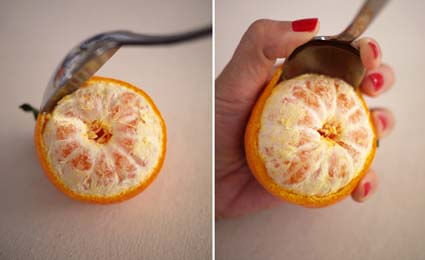
Slide the spoon inside the peel and then remove the fruit with extreme care. Take the fruit and save it for later use. Make sure not to break the peel.
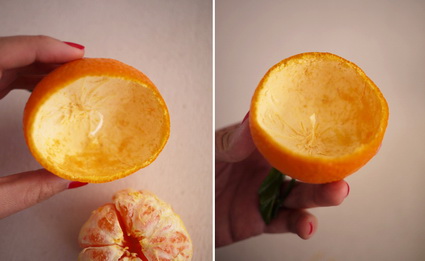
Put the candle mixture in the peel and let sit. To make the candle mixture, simply follow the steps mentioned earlier in this post. Then, simply replace the traditional mold with the peel.
See how easy it is to make aromatic candles? Try making your own today!
Photos courtesy of ManualidadesBlog.
All cited sources were thoroughly reviewed by our team to ensure their quality, reliability, currency, and validity. The bibliography of this article was considered reliable and of academic or scientific accuracy.
- Imágenes cortesía de ManualidadesBlog
- Castillo, E., & Sanahuja, M. (2010). Aromaterapia. In Manual de Fitoterapia (pp. 425–437). España: Elsevier Science.
https://www.mendeley.com/catalogue/aromaterapia/ - Faucon, M. (2014). Principios de aromaterapia científica y aplicaciones prácticas en podología. EMC – Podología, 16(1), 1–8.
https://doi.org/10.1016/S1762-827X(14)66684-0 - Soto-Vásquez, M. R., & Alvarado-García, P. A. A. (2016). Aromaterapia a base de aceite esencial de Satureja brevicalyx “inka muña” y meditación mindfulness en el tratamiento de la ansiedad. Medicina Naturista, 10(1), 45–50.
https://doi.org/10.1371/journal.pone.0075829 - Andrei, P., & Comune, A. P. D. (2005). Aromatherapy and its applications. Cadernos, 11, 57–68.
https://www.mendeley.com/catalogue/aromatherapy-applications/ - Asian Pacific Journal of Tropical Biomedicine. Volume 5, Issue 8, August 2015, Pages 601-611. Essential oils used in aromatherapy: A systemic review. https://www.sciencedirect.com/science/article/pii/S2221169115001033
- National Institute of Environmental Health Sciences. Essential Oils. https://www.niehs.nih.gov/health/topics/agents/essential-oils/index.cfm
- WebMD. Essential Oils Promise Help, But Beware the Risks. https://www.webmd.com/beauty/news/20180813/essential-oils-promise-help-but-beware-the-risks
This text is provided for informational purposes only and does not replace consultation with a professional. If in doubt, consult your specialist.








